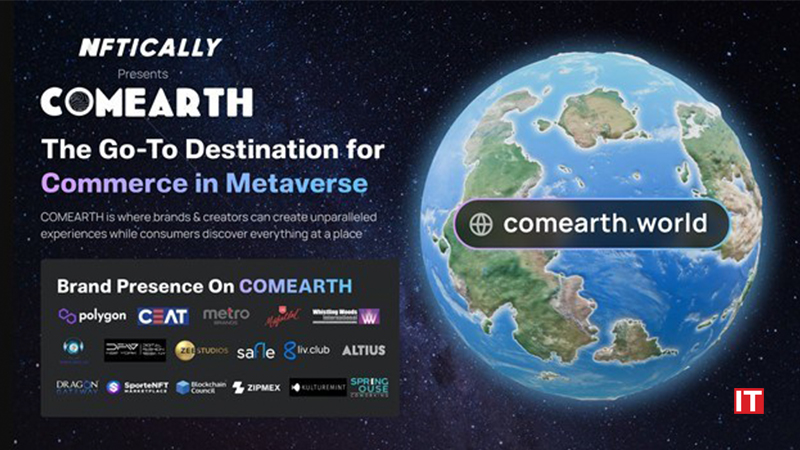NFTICALLY, a global Web3 E-Commerce SaaS platform announces the launch of “COMEARTH“, the go-to destination for commerce in the Metaverse. COMEARTH, a 3D immersive virtual environment, is powered by NFTICALLY’s “Web3 E-Commerce Engine” and backed by the trust and decentralization of the Polygon Blockchain. In COMEARTH, brands, enterprises, content creators, and celebrities will be able to purchase their virtual spaces/virtual real estate as its “Citizens” and launch the E-Commerce experiences for their customers, consumers and followers. COMEARTH will power E-Commerce for 100,000 brands and individuals by 2025.
The Metaverse has the potential to be a $13 Trillion ecosystem within a decade. The E-Commerce industry also is expected to expand at a CAGR of 22.9% between the years 2020-2027 to size over $16.2 Trillion. Exploring the intersection of two burgeoning markets, Polygon co-founders Sandeep Nailwal and Jaynti Kanani, Coinbase CPO Surojit Chatterjee, Unacademy Co-Founders Gaurav Munjal, and Roman Saini, Indian film-maker Subhash Ghai, Actor Kunal Kapoor, Capital X’s Cindy Bi, Nazara’s Nitish Mittersain have invested in NFTICALLY. Global brands Polygon, CEAT, Blockchain Council, SporteNFT, among others have come onboard COMEARTH.
COMEARTH comprises different sizes of land parcels that can be purchased as NFTs and are governed by the smart contracts deployed on top of Polygon Blockchain. It will act as a global marketplace for goods (digital, physical, and phygital) & services (within and outside of the Metaverse).
Toshendra Sharma, Founder, and CEO, of NFTICALLY, said, “COMEARTH will bring a fully-immersive DIY layer to E-Commerce and enable immersive hyper-personalization for everyone. We intend to democratize and facilitate mass Web3 adoption & bridge the gap between web3 & web2 E-Commerce.”
Brian Trunzo, Metaverse Lead at Polygon Studios, said, “Polygon Studios is pleased to welcome COMEARTH as a valued partner into the ecosystem. Their easy-to-use and powerful suite of tooling brings brands and rights holders closer to their audiences — a key aspect of facilitating broader Web3 adoption.”
































